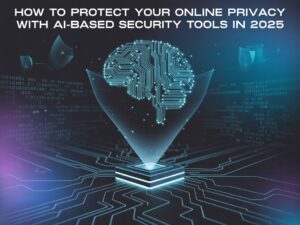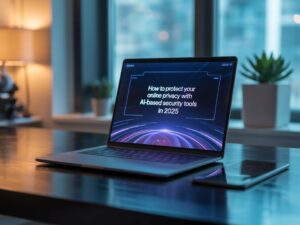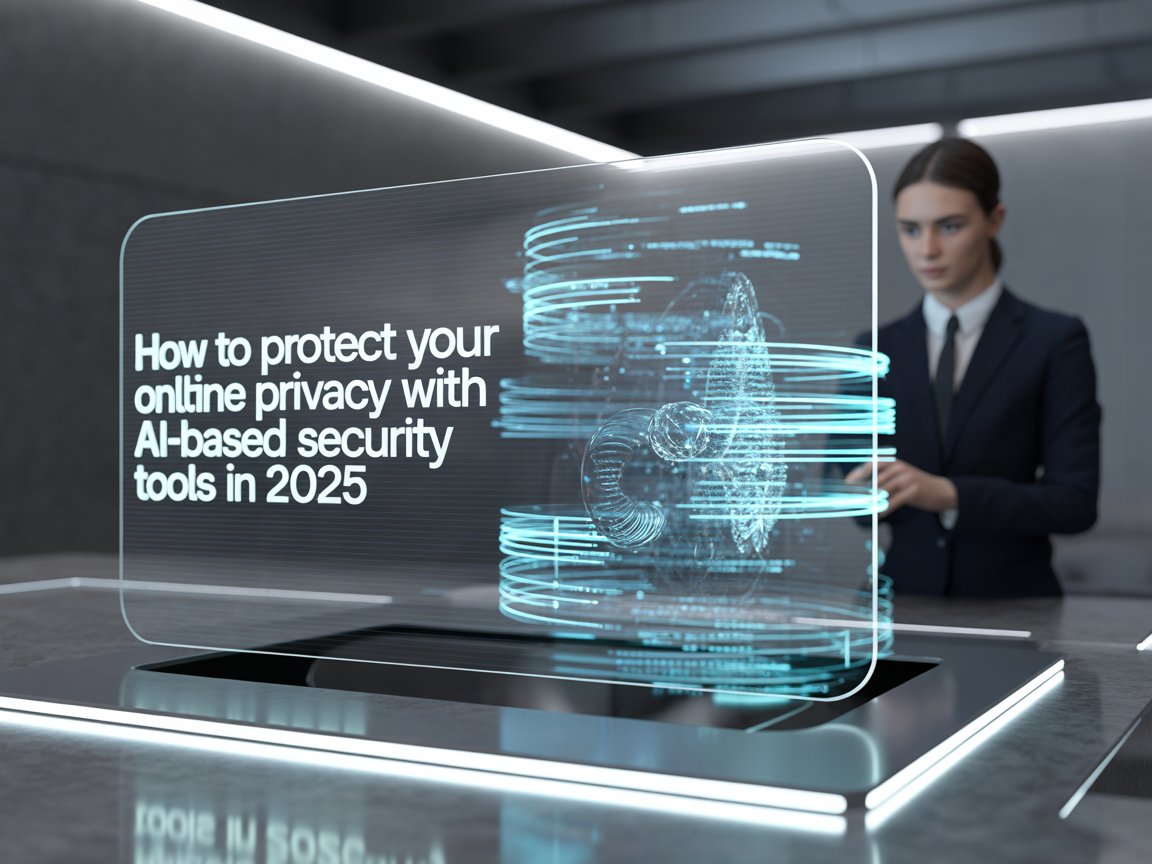How to Protect Your Online Privacy with AI-Based Security Tools in 2025

Did you know that in 2024, cybercrime cost the global economy $9.5 trillion—and experts predict it will surpass $10.5 trillion by the end of 2025? With AI becoming both a weapon for hackers and a shield for users, the stakes for your personal data have never been higher.
The good news? You can flip the balance in your favor by combining VPNs, AI-driven threat detection, and encryption services—a digital “privacy recipe” designed to keep prying eyes away from your personal life.
Whether you’re banking online, chatting with friends, or running a remote business, these tools work together like ingredients in a master chef’s dish—each with a unique flavor of protection.
Ingredients List
Your Privacy Protection Toolkit
Here’s your “shopping list” for 2025’s most effective AI-powered privacy defense:
- Premium VPN Service
Example: NordVPN, ExpressVPN, ProtonVPN.
Purpose: Masks your IP address, encrypts your traffic, and prevents tracking.
Substitute: A decentralized VPN (dVPN) like Mysterium for peer-to-peer security. - AI-Driven Threat Detection Software
Example: CrowdStrike Falcon, SentinelOne, Darktrace.
Purpose: Identifies suspicious activity in real time using machine learning.
Substitute: Open-source AI security tools like Wazuh for tech-savvy users. - End-to-End Encryption Service
Example: ProtonMail, Signal, Tresorit.
Purpose: Ensures only you and the intended recipient can read your messages/files.
Substitute: Zero-knowledge cloud storage like Sync.com. - Secure Password Manager with AI Breach Alerts
Example: 1Password, Bitwarden, Dashlane.
Purpose: Stores unique, complex passwords and alerts if your credentials appear in a breach. - Multi-Factor Authentication (MFA) Tools
Example: Authy, Microsoft Authenticator, YubiKey.
Purpose: Adds a second layer of verification beyond your password.
Timing
How Long Until You’re Fully Protected?
- Setup Time:
- VPN: 10–15 minutes
- AI Threat Detection: 20–30 minutes (plus integration time if using multiple devices)
- Encryption Services: 15–20 minutes
- Learning Curve:
- Basic users: 1–2 hours to get comfortable.
- Tech-savvy users: 30–45 minutes.
- Time to See Results:
- Immediate for VPN encryption and MFA.
- 1–2 weeks for AI systems to “learn” your usage patterns and improve detection accuracy.
Compared to traditional antivirus, AI-based tools can cut detection and response time by up to 80%, drastically reducing the window of vulnerability.

Step-by-Step Instructions
Step 1: Choose Your VPN Wisely
- Pick a service with AES-256 encryption, a strict no-logs policy, and AI-enhanced server selection for faster speeds.
- Avoid free VPNs—they often monetize through your data.
Step 2: Set Up AI Threat Detection
- Install across all devices (PC, phone, tablet).
- Enable real-time scanning and behavioral analysis features.
- Customize alerts to avoid “alert fatigue” while still catching real threats.
Step 3: Enable End-to-End Encryption
- Use encrypted messaging apps like Signal for private chats.
- Store sensitive documents in encrypted cloud folders.
- For extra privacy, set messages to self-destruct after a chosen time.
Step 4: Lock Down Passwords
- Use an AI-powered password manager to generate random 20+ character passwords.
- Enable breach monitoring—AI will scan the dark web for your leaked credentials.
Step 5: Activate MFA Everywhere
- Prioritize MFA on email, banking, and social media accounts.
- For ultimate security, use a hardware security key.
Nutritional Information
The Privacy Benefits Breakdown
| Tool/Feature | Main Benefit | Security Boost |
|---|---|---|
| VPN | Encrypts traffic, hides IP | 90% reduction in exposure to ISP & public Wi-Fi risks |
| AI Detection | Identifies threats before damage | 70% faster detection vs. manual methods |
| Encryption | Keeps messages/files private | 100% confidentiality (with proper key management) |
| Password Manager | Prevents weak/reused passwords | Reduces hack risk by 60–80% |
| MFA | Stops unauthorized logins | Blocks 99.9% of account takeover attempts |
Healthier Alternatives for the Recipe
Privacy Options for Different Needs
- For Budget Users:
- Use ProtonVPN’s free plan + Bitwarden (free tier) + Signal.
- For High-Risk Users (journalists, activists):
- Use a decentralized VPN + Tails OS + ProtonMail + encrypted USB storage.
- For Business Teams:
- Enterprise-grade AI detection + managed VPN + company-wide MFA policy.
Serving Suggestions
How to Make Privacy a Daily Habit
- Always connect to your VPN before using public Wi-Fi.
- Keep your AI threat detection running in the background 24/7.
- Use encrypted messaging for all sensitive communications—even casual ones.
- Store backups in encrypted formats offline as well as in secure cloud storage.
Common Mistakes to Avoid
- Using a VPN without enabling kill switch → Your data leaks when connection drops.
- Ignoring AI security alerts → Small ignored alerts often signal big breaches.
- Using the same password across multiple sites → One breach can expose all.
- Storing encryption keys on the same device as encrypted files → Defeats the purpose.
Storing Tips for the Recipe
Maintaining Long-Term Privacy
- Update all tools monthly or enable auto-updates.
- Rotate passwords every 6–12 months (AI managers can automate this).
- Periodically audit app permissions—remove anything suspicious.
- Back up important data in encrypted form and store it offline.
Conclusion
AI-powered privacy protection isn’t just for cybersecurity experts—it’s your digital seatbelt in 2025. By combining VPNs, AI-driven threat detection, and encryption services, you can drastically reduce your risk of hacking, surveillance, and identity theft.
Ready to take control? Try these tools today and share your experiences in the comments—or subscribe to our blog for more security guides.
FAQs
Q1: Can AI-based tools replace traditional antivirus?
A: Not entirely. AI tools are more proactive, but pairing them with a reputable antivirus offers complete coverage.
Q2: Are free VPNs safe in 2025?
A: Most are risky due to data logging. Use only trusted free plans like ProtonVPN’s.
Q3: How often should I update my encryption keys?
A: Every 6–12 months or after any suspected breach.
Q4: Will AI threat detection slow my computer?
A: Modern tools use lightweight algorithms that run efficiently, even during gaming or streaming.
Q5: Is MFA really necessary if I have strong passwords?
A: Yes—MFA adds a critical layer that passwords alone can’t match.

